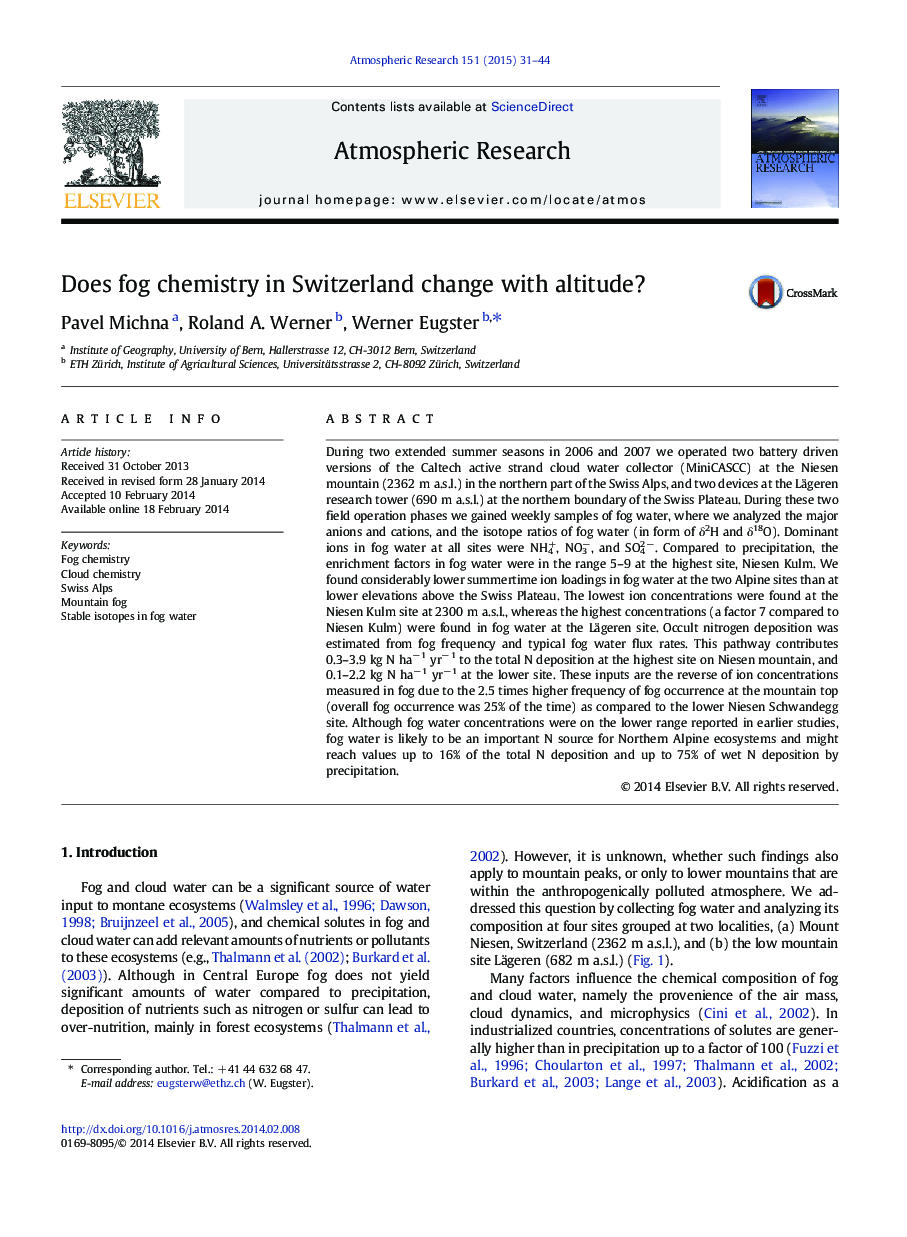| Article ID | Journal | Published Year | Pages | File Type |
|---|---|---|---|---|
| 4449769 | Atmospheric Research | 2015 | 14 Pages |
•We measured inorganic chemistry and stable isotopes in fog water.•Concentrations in fog were lower on top of a mountain, than at low elevation.•Nitrogen deposition by fog was estimated for mount Niesen, 2300 m a.s.l.•Occult deposition by fog is estimated at 0.3 to 3.9 kg N ha− 1 yr− 1.•Compared to wet deposition (5.2 kg N ha− 1 yr− 1) this is a relevant addition.
During two extended summer seasons in 2006 and 2007 we operated two battery driven versions of the Caltech active strand cloud water collector (MiniCASCC) at the Niesen mountain (2362 m a.s.l.) in the northern part of the Swiss Alps, and two devices at the Lägeren research tower (690 m a.s.l.) at the northern boundary of the Swiss Plateau. During these two field operation phases we gained weekly samples of fog water, where we analyzed the major anions and cations, and the isotope ratios of fog water (in form of δ2H and δ18O). Dominant ions in fog water at all sites were NH4+, NO3−, and SO42 −. Compared to precipitation, the enrichment factors in fog water were in the range 5–9 at the highest site, Niesen Kulm. We found considerably lower summertime ion loadings in fog water at the two Alpine sites than at lower elevations above the Swiss Plateau. The lowest ion concentrations were found at the Niesen Kulm site at 2300 m a.s.l., whereas the highest concentrations (a factor 7 compared to Niesen Kulm) were found in fog water at the Lägeren site. Occult nitrogen deposition was estimated from fog frequency and typical fog water flux rates. This pathway contributes 0.3–3.9 kg N ha− 1 yr− 1 to the total N deposition at the highest site on Niesen mountain, and 0.1–2.2 kg N ha− 1 yr− 1 at the lower site. These inputs are the reverse of ion concentrations measured in fog due to the 2.5 times higher frequency of fog occurrence at the mountain top (overall fog occurrence was 25% of the time) as compared to the lower Niesen Schwandegg site. Although fog water concentrations were on the lower range reported in earlier studies, fog water is likely to be an important N source for Northern Alpine ecosystems and might reach values up to 16% of the total N deposition and up to 75% of wet N deposition by precipitation.
